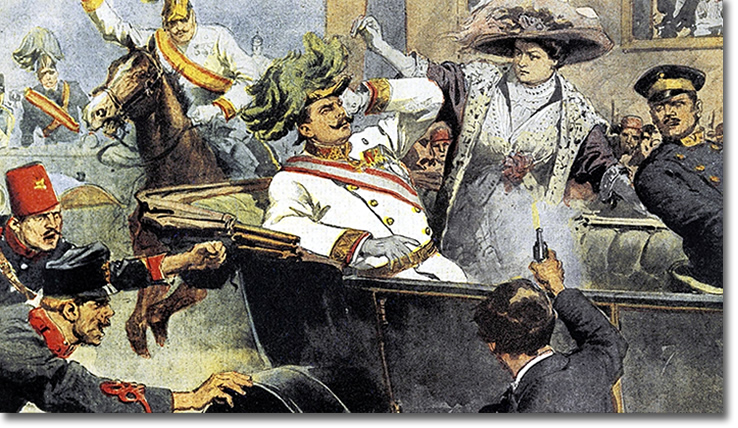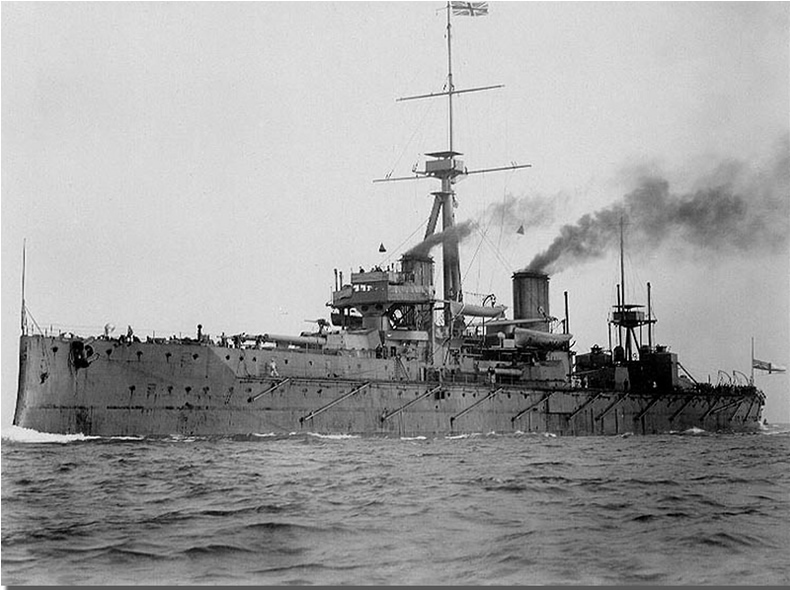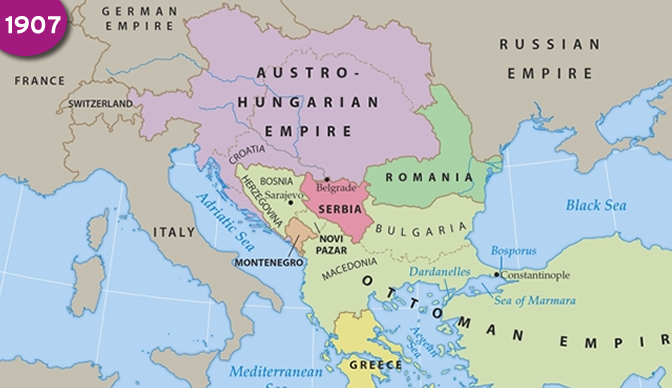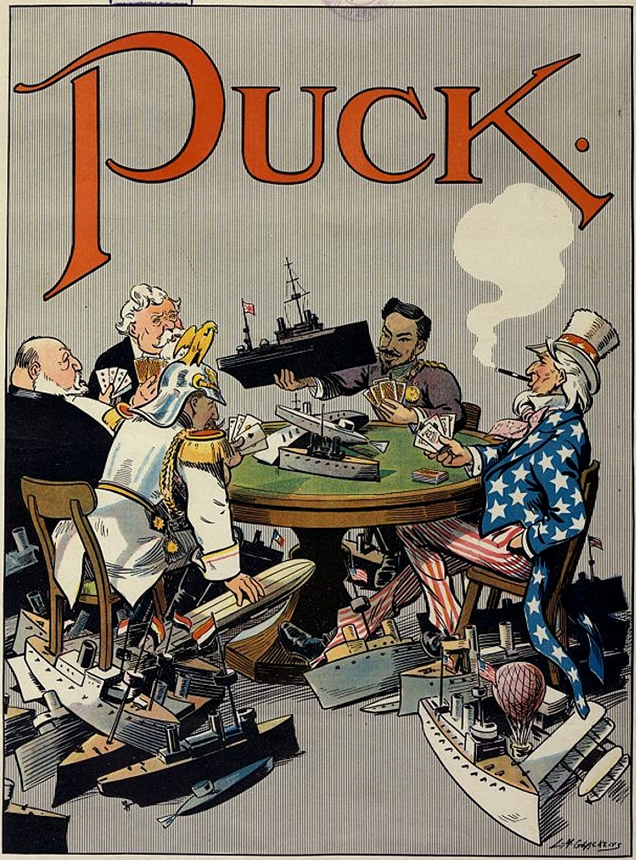A Fire Waiting to Be Lit: The Origins of World War I
|
Instructions for Teachers on the Activities In addition to the main article "A Fire Waiting to Be Lit: The Origins of World War I," this lesson has four Common Core activities. Students will need to read and discuss the main article before doing the activities. Click on the activities tab below to access each of the activites. Included are instructions for teachers and students, followed by student handouts. Students should have the main article available for reference for each of the activities. |
Main Article
A Fire Waiting to Be Lit: The Origins of World War I

The assassination of Archduke Ferdinand and his wife,Sophie, as depicted in a drawing
on the front page of a 1914 Italian newspaper. (Wikimedia Commons)
On June 28, 1914, an angry young man opened fire on a car going through the streets of Sarajevo, the capital of Bosnia. His targets were two passengers in the open car: Franz Ferdinand, heir to the throne of Austria-Hungary, and his wife Sophie. The attacker succeeded in killing them. The murders sparked a conflict that exploded into a war enveloping much of the world, causing more than 16 million deaths, and leaving 20 million people wounded or missing. World War I lasted four years and brought destruction on a scale that no one had imagined. Why and how did the world go to war in 1914?
For about 100 years, from 1815 to 1914, the great powers of Europe had managed to avert a full-scale Europe-wide war. The British Empire dominated the world. With its dominions and colonies, the empire held sway over about 450 million people and almost a quarter of the Earth's land area. In 1850, Britain led the world in industrial manufacturing. Britain was producing about two-thirds of the world's coal and more than half of its iron and cloth.
The brief Franco-Prussian War, which ended in 1871, led to a shift in Europe's balance of power. Prussia, along with other German states, quickly defeated France. The German states formally united as the nation of Germany, and Germany began to catch up to Britain in economic power. In 1870, Britain had 32 percent of the world's manufacturing capacity, but by 1910 Germany had 15.9 percent and Britain had only 14.7 percent. (The U.S. had also boomed, with 35.3 percent.) And Germany, now industrialized, began to develop colonial ambitions, which caused conflicts with Britain, France, and other European countries.
In an 1897 debate in the German Reichstag, its parliament, the foreign secretary stated, "In one word: We wish to throw no one into the shade, but we demand our own place in the sun." The head of the German Empire, Kaiser Wilhelm II, committed himself to making Germany into a global power through aggressive diplomacy and the acquisition of overseas colonies.
Actions in Morocco
One instance of the kaiser's aggressive diplomacy was in North Africa. In 1905, he disembarked from a German warship in the Moroccan port of Tangier and spoke in favor of Moroccan independence. Germany had no real interest in Morocco, but France did. The kaiser's goal was to support the sultan of Morocco and to impress others with Germany's power and prestige.
Germany called for an international conference to consider whether France's actions in Morocco had violated an international treaty. A conference took place the next year in the Spanish town of Algeciras to discuss issues of international law in the African colonies. But the outcome was not particularly positive for Germany, because Britain voted with France, as did Italy, and only Austria backed the kaiser.
The kaiser made a second try at demonstrating Germany's power in Morocco. In July 1911, a German gunboat, the Panther, arrived at Agadir, a large city on the Moroccan coast. The Germans stated that they had come to protect Morocco from French troops, which had entered the city of Fez to put down rebels. But Germany's true goal was to get access to territory in the Congo. Negotiations between France and Germany resulted in Germany's obtaining a small parcel of territory in the French Equatorial African colony of Middle Congo — a marshy area where sleeping sickness was widespread.
 |
|
The first of its kind, the British navy’s powerful Dreadnought became the standard for battleships of the era. (Wikimedia Commons) |
The kaiser's "gunboat diplomacy" damaged Germany's relations with Britain. Fearing Germany might meddle with its colonies, Britain drew closer to France, leading the two countries to make a naval agreement. Britain's Royal Navy promised to protect the northern coast of France from German attack, and France promised that her fleet in the western Mediterranean would protect British interests there.
Control of the Seas
Rivalry among the great powers grew during the early years of the 20th century. France was determined to restore its prestige and power and to regain the provinces of Alsace and Lorraine, which it had lost in the Franco-Prussian War. The kaiser in Germany, jealous of Great Britain's empire, implemented Weltpolitik, "world policy." The aim of Weltpolitikwas to transform Germany into a global power through aggressive diplomacy, the acquisition of overseas colonies, and the development of a large navy. The kaiser believed that Germany's greatness depended on her becoming a naval power. "We have fought for a place in the sun," the kaiser said, and won it. "Our future is on the water." And Britain, which long had enjoyed naval supremacy, became alarmed at Germany's intentions.
Those intentions were clearly stated in the naval laws, which the German Reichstag passed beginning in 1898. The first Naval Law set a large number of ships to be constructed by 1904. A second Naval Law, passed in 1900, doubled the size of the fleet and made clear that the German navy would become a serious rival to the British Royal Navy. Britain depended on its navy to shield it from invasion. The British believed that the new plans for expanding the German navy were designed for a possible conflict with the British fleet.
|
A 1909 cover cartoon on the American magazine Puck |
From 1902 until war broke out in 1914, the British and Germans engaged in a naval arms race. The British designed a powerful new battleship, the Dreadnought, which it launched in 1906. The Germans immediately copied the Dreadnought, and the British Admiralty decided to maintain as many ships as Germany plus an additional six. The British also redistributed their ships so the biggest and most powerful ships were situated to fight the Germans. The effects of this race put a huge financial burden on both countries. But the naval race continued as the two powers struggled to dominate the seas.
Agreements in Case of War
The struggle for imperial power was not confined to North Africa. The Russians and Japanese, competing for territory in Korea and Manchuria, went to war in 1904. The Russians also had imperialist goals in Persia and on the borderlands with India, which created tension with Britain. India was part of the British Empire, and the British were also heavily invested in Persia, which it saw as an important source of oil. To address the rivalries for foreign investment and territory, the European powers began to join together in agreements, or alliances, which would guarantee them support from other nations in case of war.
Under the guidance of the German Chancellor Otto von Bismarck, Germany and Austria-Hungary formed a military alliance in 1879. Three years later, Italy joined in what became the Triple Alliance. The terms of the alliance were, in brief, that if any member became involved in war with another great power, its allies would come to its aid by force of arms. The Triple Alliance lasted until the First World War.
In response to the Triple Alliance, the French decided to form its own alliance with Russia. Signed in 1894, the Franco-Russian Alliance provided that if one of the countries of the Triple Alliance (Germany, Austria-Hungary, and Italy) attacked France or Russia, its ally would attack the aggressor.
Britain meanwhile was increasingly concerned about Germany's push to acquire new colonies and secure foreign trade. Britain decided that it should forge greater ties with European powers. Britain and France had previously competed over who would control the Nile River as well as Egypt and Morocco. But in 1904, the governments settled their dispute. The French recognized the British occupation of Egypt, and the British recognized the French penetration of Morocco. Britain and France did not have a specific alliance and did not state clearly what would happen if they were attacked, but it was a close understanding that came to be known as the Entente Cordiale. Three years later, Britain and Russia put aside their differences over Persia and India. In an Anglo-Russian convention, the British recognized a Russian sphere of influence in the north of Persia and the Russians a British sphere in the south and the east. Thus, by 1907 the older Triple Alliance faced a new Triple Entente, composed of France, Russia, and Britain. The major European powers had divided into two opposing groups.
From the New York Times of October 7, 1908AUSTRIA TAKES TWO PROVINCES Britain, Framers, and Russia Acting Together — Bulgarian Minister Explains the Declaration of Independence. LONDON, Oct. 6. — The second and culminating step in the Austro-Bulgarian programme for the aggrandizement of themselves at the expense of the status established by the Treaty of Berlin was consummated to-night when Emperor Francis Joseph formally proclaimed the practical annexation of Bosnia and Herzegovina to the dual monarchy, with a pledge of a Constitution guaranteeing civic rights and a representative assembly. The present situation is as follows: Turkey calls upon the powers to preserve to her what they guaranteed by that treaty: Austria and Bulgaria strongly declare their determination to keep what they have taken. Servia is protesting belligerently against being hemmed in more strongly between two unpopular neighbors and against having the Servians in Bosnia absorbed into the Austro-Hungarian nationality. The other powers concerned in the Berlin Treaty are discussing the holding of an international conference. Turkey's unexpectedly restrained policy minimized the possibilities of war, which now is considered out of the question. A conference of the powers is expected to be held within two or three months if it can be arranged, but no one imagines that it will undo this week's work. Austria declines even to discuss the matter of its annexation of the provinces, and the most that is expected is some arrangement that will save Turkey's pride. Before the powers agree to enter upon a conference, they probably will be obliged to define its scope, which will be a hard task. British statesmen suggest that compensation be made to Turkey, and that guarantees be given against further disturbance of the status quo. Sir Edward Grey, the Foreign Secretary, will address his constituents tomorrow evening, when it is expected he will explain the attitude of the British Government. The English papers unite in praising Turkey's moderation and in denouncing Austria. The Standard, in a typical utterance, says: "We are sorry for the aged Emperor. We regret that so late in his long and honorable career he has chosen to sully his name with a deed which will go down in history alongside of the partition of Poland." Several of the London newspapers question whether or not Emperor Francis Joseph is acting against his will. |
The Balkan Crises
At the same time as the great powers' conflict over Morocco, a series of crises erupted in the Balkans. Slavic-speaking peoples known as South Slavs — Bosnians, Bulgarians, Croats, Macedonians, Montenegrins, Serbs, and Slovenes — lived in the Balkan region located south of Austria-Hungary and north of Greece. Serbia and Montenegro had gained their independence in 1878 under the Treaty of Berlin, an international agreement between the European powers and the Ottoman Empire. Millions of other South Slavs lived nearby in parts of the Austro-Hungarian Empire (such as Bosnia and Croatia) and in the European part of the Ottoman Empire (such as Bulgaria and Macedonia). As the Ottoman Empire began to break up, a sense of nationalism was growing among these people. By 1900, many radical South Slavs decided that Austria-Hungary should be broken up and that they — the South Slavs — should either unite in one independent state (Yugoslavia, meaning "South Slavia") or form a number of independent states.
The first crisis began in 1908. Russia was trying, as it had throughout history, to get control of the Turkish Straits (the Bosporus, the Sea of Marmara, and the Dardanelles), which connect the Black and Aegean seas. Control of the straits would give the Russian navy access to the Aegean and the Mediterranean. According to an existing international treaty, however, the straits would be closed to all warships in time of war, which meant the Russian fleet would be bottled up in the Black Sea.
Russia entered talks with Austria-Hungary. Under the 1878 Treaty of Berlin, Austria occupied and administered the Ottoman Empire's provinces of Bosnia and Herzegovina. Austria wanted to annex the two provinces, which legally still belonged to the Ottoman Empire. Austria had invested heavily in these provinces and did not want them returned to the Ottoman Turks or become independent. It felt it could placate the Ottomans by giving up all claim to the Novi Pazar, a Turkish region that separated Serbia from Montenegro.
Russia thought Austria-Hungary had agreed to call an international conference. At the conference, Austria would support opening the Aegean to Russian warships. It would also back Russia in allowing Serbia to expand its borders (into areas controlled by the Ottomans) and in granting independence to Bulgaria, which was a self-ruling province in the Ottoman Empire. In return, Russia would support Austria's annexation of Bosnia and Herzegovina.
Austria never called for an international conference. Instead, in October 1908, Bulgaria declared its independence. The next day, Austria announced its annexation of Bosnia and renounced any claim to Novi Pazar.
The Serbs erupted in a frenzy. The Serbian press lashed out at Austria, demonstrators filled the streets of Belgrade (the capital of Serbia), and Serbia mobilized its army. War became a real danger.
Austria's annexation of Bosnia also angered other European powers and the Ottoman Empire. Austria had violated the Treaty of Berlin, an international treaty. Countries called for an international conference to revise the treaty.
Austria ignored the calls, and Germany backed Austria. Austria did pay Turkey more than 2 million British pounds in compensation. Ultimately, the Treaty of Berlin was amended without a conference as each of the powers agreed to the annexation.
Among the last to agree were Serbia and Russia. The Serbian government looked to Russia for support. Russians, eastern Slavs, saw themselves as natural allies of Serbia. Too weak to back Serbia militarily and pressured by Germany, the Russian government reluctantly agreed to the annexation. The Russian government felt humiliated by Germany, betrayed by Austria, and exposed as being willing to make a deal at Serbia's expense.
The crisis brought Germany and Austria closer, and military leaders from these two countries began to meet. The Germans committed themselves to Austria, and the Austrians began a more aggressive policy against the Slav threat.
Serbs responded by organizing radical nationalist societies. Narodna Odbrana ("National Defense") formed right after the annexation. It spread propaganda favoring South Slav independence and enlisted volunteers into paramilitary units. Young Bosnia, a group of like-minded student revolutionaries, sprang up in Bosnia itself. Most dangerous was a secret group called Unification or Death, commonly known as the Black Hand. Linked to the head of Serbian Military Intelligence, the Black Hand generated propaganda and advocated terrorism against Austria-Hungary, which it regarded as a deadly enemy.
War did break out in the Balkans in 1912 and again in 1913. In both wars, the Balkan states fought to divide up the parts of the Ottoman Empire located on the European continent. Serbia, Bulgaria, Montenegro, and Greece joined forces with support from Russia, and the first war ended with the Treaty of London in May 1913. But the countries that had fought together during the war still contested territory, and two months later, Bulgaria attacked its former allies, Serbia and Greece. Turkey joined the war as well. In August 1913 the second Balkan War ended with the Treaty of Bucharest.
As a result of the Balkan wars, the Ottoman Empire lost almost all its land in Europe. Greece, Serbia, Bulgaria, and Montenegro expanded their borders. The non-Slavic Balkan nation of Albania gained its independence. And Serbia and Russia (which had sided with Serbia) lost a key ally in Bulgaria (which became an ally of Austria).
Tension over the Balkans remained high. All the contestants still desired more land. The Ottoman Empire wanted its land back, and Austria-Hungary continued to control large populations of South Slavs.
In the words of one historian, the next Balkan crisis proved to be a fatal one. It was fatal, because the other crises before it had left "feelings of exasperation in Austria, desperation in Serbia, and humiliation in Russia." And soon after, in June 1914, the heir to the Austro-Hungarian Empire made a fatally bad decision to visit Bosnia with his wife, Sophie.
Map of the Balkans in 1907 and in 1914(Hover on and off map to see change.) |
||
 |
The World Goes to War
Franz Ferdinand was assassinated on June 28, 1914 in Sarajevo, the capital of Bosnia, by an 18-year-old Bosnian named Gavrilo Princip. Part of a team of assassins in Sarajevo that day, Princip belonged to the Young Bosnia group, and the Black Hand terrorist group had trained the team. Rounded up by Austrian authorities, the assassins eventually named three leaders of the Black Hand as the planners of the attack: Chief of Serbian Military Intelligence Dragutin Dimitrijevic, his close associate Serbian Army Major Vojislav Tankosic, and Milan Ciganovic, a Bosnian Serb.
The Austrian government was already determined to crush the South Slav movement. The assassination of the heir to the empire set a war against Serbia in motion.
Because of the two alliances, the war would not be limited to Austria and Serbia. Fearing that Russia would support the Serbs, Austria looked to Germany for support. The German chancellor called a meeting in Potsdam on July 5, and with the backing of those attending, he agreed to give Austria full military support. Knowing of the alliance between France and Russia, Germany had a war plan that called for military action on two fronts: against Russia in the east and France in the west. Germany did not know whether Britain would join its allies if war broke out. But to achieve a quick invasion on the western front — against France — Germany planned to invade France through Belgium.
An invasion through Belgium, however, would make it likely that Britain would go to war. The countries of Europe had long promised to respect Belgium's independence and neutrality. Britain had signed a treaty committing it to protect Belgium if it were invaded.
War did not break out immediately. The great powers made military plans and issued ultimatums. On July 23, 1914, Austria sent a note to Serbia accusing the Serbs of "inciting its people to hatred of the Monarchy" and making 10 demands, with a 48-hour ultimatum. When Russia learned of the note, it announced that it would mobilize its army if Austria invaded Serbia. And when Serbia did not agree to all of Austria's demands, the great powers went down a slippery slope to war. On July 28, Austria declared war on Serbia. Russia ordered partial mobilization of its troops on July 29. Germany warned Russia to demobilize, and when it refused, began its mobilization the same day. On August 1, France ordered mobilization, and two hours later Germany declared war on Russia. The final step, which brought Britain into the war, came on August 3 when Germany invaded Belgium and declared war on France. Britain issued a 24-hour ultimatum demanding that Germany withdraw its forces from Belgium. Germany refused, and on August 4, 1914, Germany and Britain were at war.
* * * * *
David Lloyd George, who was a member of the British cabinet in 1914, and prime minister from 1916 to 1922, wrote in his memoirs that in 1914 no one had wanted a European war, no one expected it, and that the "nations had slithered over the brink." Certainly no one expected that the war would last four years; most soldiers left home expecting to be back by Christmas. And probably no one expected that the alliance system, which was designed to protect the great powers from harm, would in fact propel them into war.
Discussion and Writing
- What were the great powers before World War I? Which do you think was the most powerful? The weakest? Why?
- In 1897, the German foreign secretary stated, "In one word: We wish to throw no one into the shade, but we demand our own place in the sun." What did he mean? How might his statement be considered fair? How might someone today criticize the statement?
- What were the alliances among the great powers before World War I? Why did the alliances exist? Why didn't they prevent the war?
- Why do you think losing Bulgaria as an ally was a loss for Serbia and Russia?
- Why were the Balkans such a problem area in Europe? Do you see other areas of the world today with problems similar to those that existed in the Balkans? Explain.
- What was the annexation crisis of 1908? How important do you think it was in leading to World War I? Explain.
Activities
Activities
|
The Bosnian Crisis of 1908 |
Enrichment Activity: Cartoons of World War I |
|||||||
|
Did the Serbian Government Meet the Austrian Demands? Students debate the following proposition: The Austrian Government Should Have Accepted the Serbian Responses as Meeting Its Demands. |
Enrichment Resource: Songs of World War I |
|||||||
|
Which Country Was to Blame for World War I? |
||||||||
xxxxxxxx xxxxxxxxxxxxxxxxxxx xxxxxx x xxxxxxxxxxxxxx xxxxxxxxx xxxxxxxxxx xxxxx xxxxxxxxxxxxxxxxxxxxxxxxx x
Common Core Standards
|
Common Core Standard SL.11–12.4
|
Common Core Standard RH.11–12.8
|
xxxxxxxxxxxxxxx xxxxxxxxxx xxxxxxxxxxxxxxxxxxx xxxxxx x xxxxxxxxxxxxxx xxxxxxxxx xxxxxxxxxx xxxxx xxxxxxxxxxxxxxxx xxxxxxxxxx
Common Core College and Career Readiness Anchor Standards for the Activities
Speaking and ListeningComprehension and Collaboration:CCSS.ELA-Literacy.CCRA.SL.1 CCSS.ELA-Literacy.CCRA.SL.2 Presentation of Knowledge and Ideas:CCSS.ELA-Literacy.CCRA.SL.4 CCSS.ELA-Literacy.CCRA.SL.6 |
ReadingKey Ideas and Details:CCSS.ELA-Literacy.CCRA.R.1 CCSS.ELA-Literacy.CCRA.R.2 Integration of Knowledge and IdeasCCSS.ELA-Literacy.CCRA.R.8 |
xxxxxxxxxxxxxxx xxxxxxxxxx xxxxxxxxxxxxxxxxxxx xxxxxx x xxxxxxxxxxxxxx xxxxxxxxx xxxxxxxxxx xxxxx xxxxxxxxxxxxxxxx xxxxxxxx
The Bosnian Crisis of 1908 (Common Core State Standards)
|
CCSS.ELA-Literacy.SL.1 CCSS.ELA-Literacy.SL.1.a CCSS.ELA-Literacy.SL.1.b CCSS.ELA-Literacy.SL.1.c CCSS.ELA-Literacy.SL.1.d |
CCSS.ELA-Literacy.SL.4 CCSS.ELA-Literacy.RH.1 CCSS.ELA-Literacy.RH.9 Draw evidence from informational texts to support analysis, reflection, and research. |
Did the Serbian Government Meet the Austrian Demands? (Common Core State Standards)
|
CCSS.ELA-Literacy.SL.1
|
CCSS.ELA-Literacy.SL.1.d
|
Which Country Was to Blame for World War I? (Common Core State Standards)
|
CCSS.ELA-Literacy.SL.1 CCSS.ELA-Literacy.SL.1.a
|
CCSS.ELA-Literacy.SL.1.d
|
xxxxxx xxxxx xxxxxxx xxxxxx xxxxxx xxxxx xxxxxxx xxxxxxxxxxxx xxxxx xxxxxxx xxxxxxxxxxxx xxxxx xxxxxxx xxxxxxxxxxxx xxxxx xxxxxxx xxxxxxxxxxxx xxxxx xxxxxxx xxxxxxxxxxxx xxxxx xxxxxxx xxxxx
Cartoons of World War I (Common Core College and Career Readiness Anchor Standards)
Speaking and ListeningComprehension and Collaboration:CCSS.ELA-Literacy.CCRA.SL.1 CCSS.ELA-Literacy.CCRA.SL.2 Presentation of Knowledge and Ideas:CCSS.ELA-Literacy.CCRA.SL.4 CCSS.ELA-Literacy.CCRA.SL.6 |
ReadingIntegration of Knowledge and Ideas:CCSS.ELA-Literacy.CCRA.R.7 Common Core State StandardsCCSS.ELA-Literacy.RH.11-12.7 CCSS.ELA-Literacy.RH.11-12.9 |
xxxxx xxxxx xxxxxxx xxxxxx xxxxxx xxxxx xxxxxxx xxxxxxxxxxxx xxxxx xxxxxxx xxxxxxxxxxxx xxxxx xxxxxxx xxxxxxxxxxxx xxxxx xxxxxxx xxxxxxxxxxxx xxxxx xx
Downloads/Multimedia
PDF DownloadsMain Article: A Fire Waiting to be Lit: The Origins of World War I Activity: The Bosnian Crisis of 1908 Activity: Did the Serbian Government Meet the Austrian Demands? Activity: Which Country Was to Blame for World War I? Enrichment Activity: Cartoons of World War I |
Lesson Webcast |


